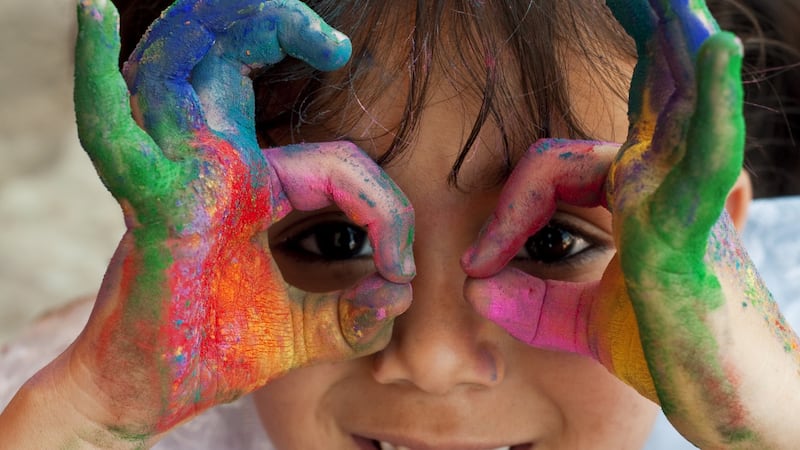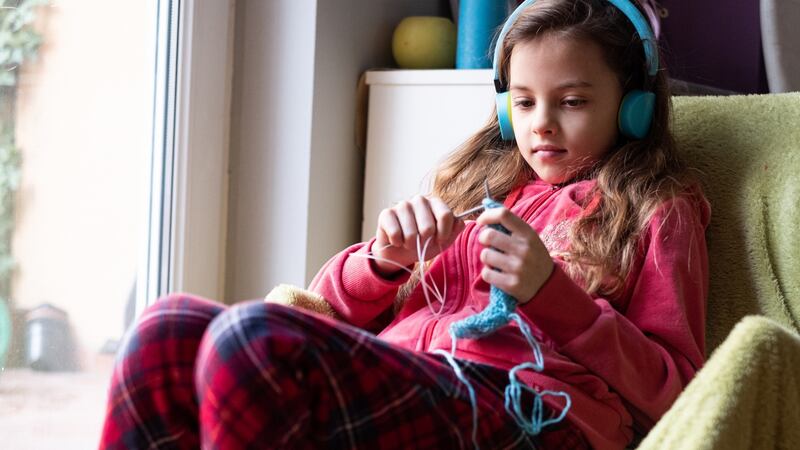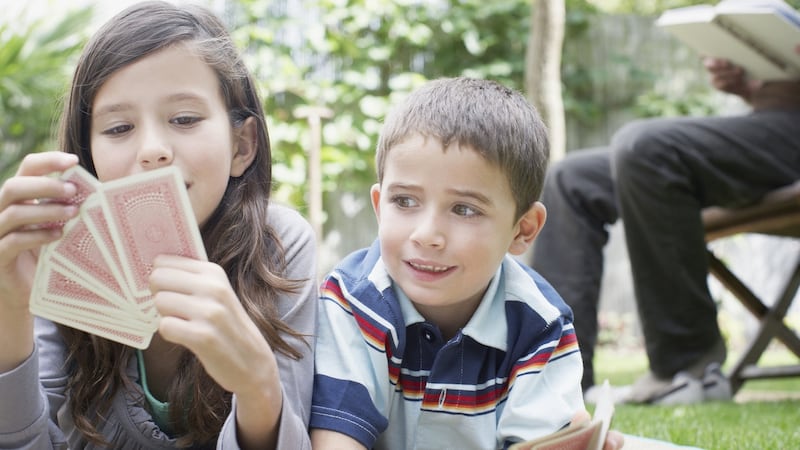Keeping busy is key to surviving this strange period in our lives. It was suggested to me recently that electronic devices are all children need to keep them amused, however, I believe that relying solely on screens will not only turn our kids into angst ridden, square-eyed loons, it would also mean we were missing out on a rare opportunity to pass on forgotten skills, reignite the fires of imagination and dare I say it, make some memories we will laugh about when all this is over.

Hopefully, in a few weeks’ time, children will be back in playschools, primary and secondary schools, but first, there is August to get over – a month with no guarantee of good weather and so, like the past few months, children may spend much of it indoors.
So, with my Montessori teacher’s hat on, here are a few ideas to help us get through the weeks ahead and maybe even teach our kids a thing or two.
Get crafty
No matter how old they are, children love making things and many old-fashioned craft activities are still relevant today. So if you don’t have a supply of paint, crayons, paper and glue in the house, now is the time to get some in (order from your local craft shop and collect or have it delivered).
Drawing and painting pictures is always fun, but by being more adventurous, kids will really be engaged – try painting old shoes, filling with soil and planting some seeds, similarly, old T-shirts can be painted or tie-dyed, while cardboard boxes can be transformed into vehicles, buildings or even spaceships – and older kids can be kept busy with stripping and painting an old piece of furniture or door.

Rainbow pictures can be made by covering a sheet of paper in various colours of crayon, then painting over it with black paint and when dried, scratching out a colourful image. Potato stencilling is also a great way to keep kids amused as is making greeting cards or pictures with glitter, glue, paint and anything else you might have lying around.
Make and do
When I was at school, knitting and sewing were part of the curriculum and while the projects we were given were mostly hideous (a gingham skirt with drawstring waist springs to mind), when push came to shove, we all knew what to do with a needle.
Unless studying home economics, most kids these days will have no experience of needlework, so you could teach them a skill which may become necessary if we have to spend several months in isolation.

Basic stitches can be used to make a simple scarf or blanket while learning how to mend tears, darn socks and turn up hems is something which, in our throwaway society, many have no idea how to do.
Learning these craft skills can also have a dual purpose as if granny (or indeed grand-dad) is on WhatsApp or FaceTime/Skype – and by now they might well be expert at it – they can get involved in the teaching process and have virtual company from grandchildren.
Basic skills
Now that the constantly moving pace of modern life has been ground to a halt, it might be time to teach our teenagers some tricks of the trade. Learning how to prepare a basic meal is obvious, but what about something a bit more elaborate?
We could pass on our grandmother’s recipe for soda bread, show our young adults how to make a soup from scratch, how to put together a casserole, make an apple pie or even some dough to make their own pizza.
And on a more practical level, changing a plug or a fuse is a necessary life skill which not many youngsters have any knowledge of – as is learning how to “cut in” to the edges of a wall when painting or even hang a picture correctly using a measuring tape to ensure accuracy.
When they have tired of learning about stuff around the house, you can move on to the car as there is a wealth of knowledge to be gleaned here – changing a tyre, putting water into the engine, filling up the windscreen wiper, attaching jump leads correctly, even changing light bulbs – and even if you don’t know how to do these things yourself, you can both learn together with the aid of handy YouTube videos.

Playing games
In a world where many kids play far too many games on their computers, now that we are all in confinement together, it’s a good time to break out the board games which are usually only used at Christmas.
In my opinion, Monopoly should be avoided as it almost always ends in a row and with many of us feeling tense enough without an argument over fictional property development, choose something a bit more light-hearted.
It might even be a good time to give the old-fashioned traditional varieties, which require actual tuition, a whirl – so if you have a chess or backgammon set, get it out and teach your children how to play.
Card games are another family winner and while the very notion may sound cheesy, sitting around the table with nothing more than a pack of cards, can be a great way to pass a few hours and involve everyone of all ages (younger children can sit on laps and “help” you choose cards).










